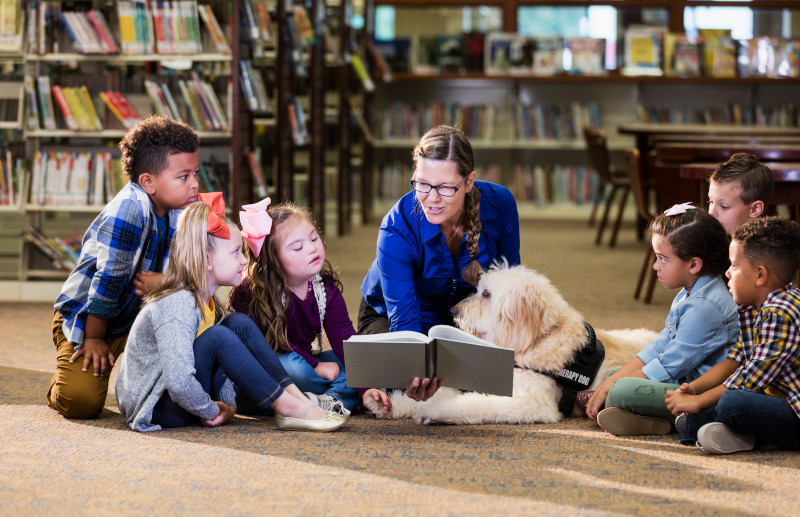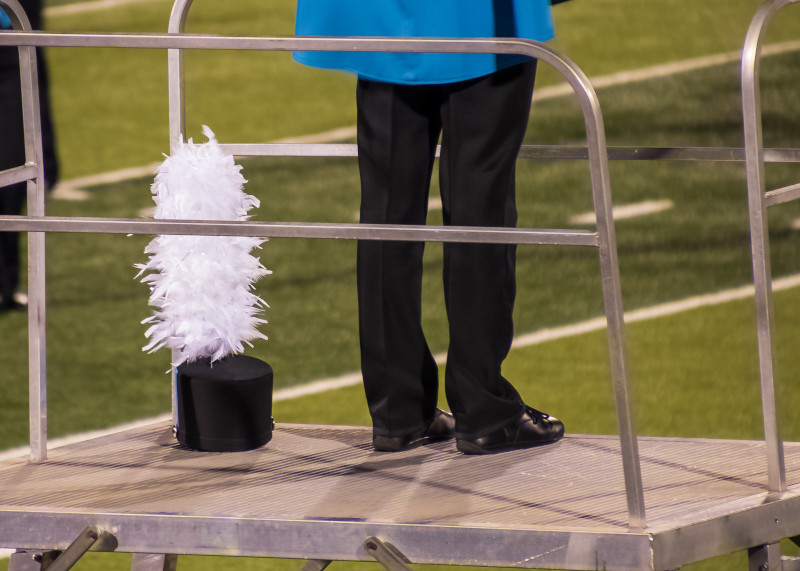COVID-19 and Therapy Dogs in Schools

Do you have therapy animals in your school or are you looking to add them? We are still learning about how COVID-19 spreads, but there have been some instances where it has been identified in animals. If you have, or are planning to have, a therapy animal in your school, it is important to follow local guidance as it relates to acceptable business and social practices. Some schools that normally use therapy animals may choose to not allow them at this time. If you are planning to move forward with a therapy animal in your facility, it is important to keep a few best practices in mind to keep everyone safe.
Therapy animal visits require some level of contact – when possible, keep animals at least 6 feet away from those not participating in the visit. Individuals with symptoms of COVID-19 should not have any contact with therapy animals. Before and after every contact, the handler and anyone petting or having contact with the animal, should wash their hands using CDC protocols.
Do not allow people to handle items that go into the dog’s mouth such as toys and treats. Disinfect high-touch items frequently, including collars, leashes, toys, therapy vests/harnesses and food and water bowls. Do not allow therapy dogs to lick or “give kisses.”
Currently, there is no evidence that the virus can spread to people from the skin or fur of animals. Prior to visits, therapy animals should be bathed/groomed with approved pet products – never use chemical disinfectants, alcohol, hydrogen peroxide or any other disinfecting product on animals.
It is important to understand the difference between therapy animals, service animals and emotional support animals. The different classifications have varying levels of access and training requirements. Regardless of the classification, review CDC guidance as it relates to methods to protect the hander and the animal during the pandemic.
Therapy animals provide affection and comfort to members of the general public, typically in facility settings such as hospitals, assisted living and schools. These animals possess a special aptitude for interacting with people. Therapy animal owners volunteer their time to visit facilities with their animal. A therapy animal has no special rights of access, except in those facilities where they are welcomed.
A therapy animal is not a service/assistance animal. Service/assistance animals are defined as animals, most frequently dogs, that are individually trained to do work or perform tasks for people with disabilities. Service dogs are considered working animals, not pets. The work or task a dog has been trained to provide must be directly related to the person’s disability. Guide, hearing and service dogs are permitted, in accordance with the ADA, to accompany a person with a disability almost anywhere the general public is allowed.
That brings us to the third classification – the emotional support animals. An emotional support animal, sometimes also referred to as a comfort animal, is a pet that provides therapeutic support to a person with a mental illness. To be designated as an emotional support animal, the pet must be prescribed by a licensed mental health professional for a person with a mental illness. The prescription must state that the individual has an impairment that substantially limits one or more major life activities, and that the animal’s presence is necessary for the individual’s mental health. Per the ADA, emotional support animals do not have the same rights to public access as service dogs. Emotional support animals may only accompany their owners in public areas with the express permission of each individual venue and/or facility management.
If your school is considering a therapy dog program, we suggest following the recommendations from Charlotte’s Litter¹ below to make sure you understand the potential pitfalls and liabilities.
- Establish a site assessment. To have a safe program, it is important for staff to familiarize themselves with basic safety and risk management information about animal-assisted therapy activities. A site assessment checklist would be helpful as a planning tool to determine if a dog therapy program is suitable for your facility. Dog therapy organizations may be able to provide the checklist and assist in the evaluation process.
- Legal liability. There are several reliable and experienced organizations such as Pet Partners and Therapy Dogs International who help train, evaluate and sponsor dog handlers. Dog handlers representing these organizations carry significant insurance coverage of $1-2 million to cover potential risks or liabilities. Furthermore, consent forms can be provided for children and parents to ensure full awareness and to deter potential liability.
- Animal maintenance. Reliable therapy dog organizations require regular veterinarian checks for their dogs along with regular evaluations of handlers to maintain their certification status. Competent dog handlers are trained to watch for potential harm to either a child or their own dog and are primarily responsible to manage the animal when on-site.
If the school entity chooses to pursue this endeavor, we strongly recommend a discussion with the school district solicitor to draft a pet policy and waiver of liability which includes language indemnifying the school and requiring proof of insurance by the animal owner, as outlined above.
¹Charlotte’s Litter, “Bringing Therapy Dogs to Your School,” 2014, www.charlotteslitter.org.




